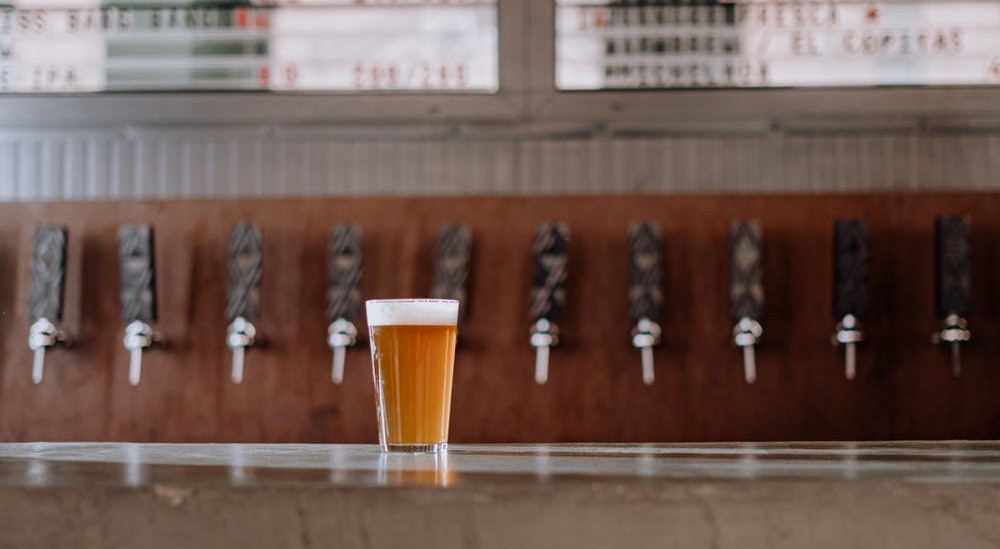Carbon dioxide accumulating in the atmosphere is one of the main drivers of climate change – but it’s also a key ingredient in the brewing process.
As beer ferments, it releases CO2. But at many Molson Coors Beverage Company’s breweries, it’s not released into the atmosphere. Instead, the byproduct of fermentation is captured and reused later in the brewing process. Those tiny bubbles that tickle the tongue on a swig of Miller High Life? That’s CO2 harvested from what otherwise would be waste.
As corporations look to be more efficient, they often find they can do so by adopting more sustainable practices, including finding new uses for waste.
For Molson Coors, the CO2 collection process checks every box. By reusing the CO2 emitted during brewing, it reduces each brewery’s reliance on carbon sold on the open market, while achieving one of the company's sustainability goals of reducing direct emissions by 50% by 2025.
“We need it. We use CO2 in both brewing and packaging, so if we didn’t have a way to recycle it, we’d be purchasing it all, and that would raise our costs,” says Carl Hartman, brewing operations manager for Molson Coors’ Milwaukee brewery. “We want to be cost competitive when we can. One of the easy ways is to recycle things where we can.”
When CO2 is captured during fermentation, it’s transferred within the brewery, then purified and compressed into a liquid for storage. From there it’s turned back into gas to be used in the packaging process, where it’s injected into the fermented product, giving beer its signature fizz.
Carbon dioxide is also injected into cans and bottles to push out any oxygen, which can have a detrimental effect on beer, causing off-flavors such as undesired notes of cardboard, paper or a stale quality. “Oxygen is one of the demons for beer, so we do not want to oxygenate or add anything to our process that would produce that,” Hartman says.
‘More resilient’
Reusing carbon dioxide saves money, too. Across its North American breweries, Molson Coors uses hundreds of thousands of tons of CO2 a year. Reusing it means the brewer doesn’t have to purchase its entire CO2 stockpile on the open market, where demand has outstripped supply and prices have skyrocketed following decreased ethanol production due to the pandemic and severe weather events.
“We’re more resilient as an organization if we’re able to use the resource we’re actually producing,” says Audrey Templeton, enterprise risk manager at Molson Coors. “There are a lot of other businesses that need CO2, so if we can use our self-generated CO2, then we’re not always competing with everyone else for a somewhat limited resource.”
Most Molson Coors breweries create about 70% to 80% of the CO2 they require, and together they produce -- and reuse -- about 250,000 metric tons of CO2 a year.
Molson Coors also repurposes other byproducts of the brewing process that otherwise would go to waste, such as methane, which it turns into energy. At its Shenandoah brewery in Elkton, Va., for example, the converted brewing waste creates about 1 megawatt of energy a year, one sixth of its energy consumption annually. That’s enough to power between 400 and 900 homes a year.
“We are one of the most energy-efficient breweries in the world,” says Mike Ouderkirk, brewing manager for the Shenandoah facility, which also hasn't sent garbage to a landfill since 2011. “From a carbon footprint standpoint, we use less electricity, less gas and we collect a significant amount of our CO2.”
More accessible tech
The term “carbon capture” has a certain allure in climate circles – sucking carbon dioxide from the air and storing it in the ground reduces the amount of greenhouse gases in the atmosphere. For breweries, the process is simpler, and the appeal is financial as much as it is environmental. But for smaller breweries that produce fewer than 100,000 barrels a year, it’s been hard to make the business case to invest in the type of technology Molson Coors and other large breweries have used for decades.
That’s changing as a crop of innovators are designing smaller-scale systems that allow craft brewers to capture and recycle their carbon emissions, even putting some back into the open market, an idea that is gaining steam in the industry.
“The industry is looking at how it can be more circular and help provide a much-needed product to other businesses,” Templeton says.
While its CO2 collection processes help Molson Coors meet its 2025 emissions goals, it’s making progress toward benchmarks in other areas, as well.
- Earlier this month, the company announced it was doing away with plastic rings in the U.K., replacing them with recyclable cardboard sleeve packaging for major brands like Molson Canadian and Carling. Last year the company said that 99% of its packaging in North America was recyclable or reusable.
- Also in April, Molson Coors became the first major brewer in the U.K. to be operated entirely by renewable energy sourced from the main power grid. Molson Coors’ global sustainability efforts include reducing its carbon emissions across its direct operations by 50% by 2025. With its renewable energy deal, Molson Coors’ U.K. operations are on track to achieve that goal four years early.
- The company recently launched a low-carbon beer bottle in the U.K. as part of a trial with its Staropramen brand that reduced the carbon footprint of its bottle production by 90%.
- The brewery also launched three major initiatives in the U.S. Last month it became a founding member of the Texas Water Action Collaborative, which helps protect the Upper Trinity River in Texas, where its Fort Worth Brewery is located. It also recently launched Coors Pure, its first USDA-certified organic beer, and Coors Seltzer, which has a mission to help restore America’s rivers.

